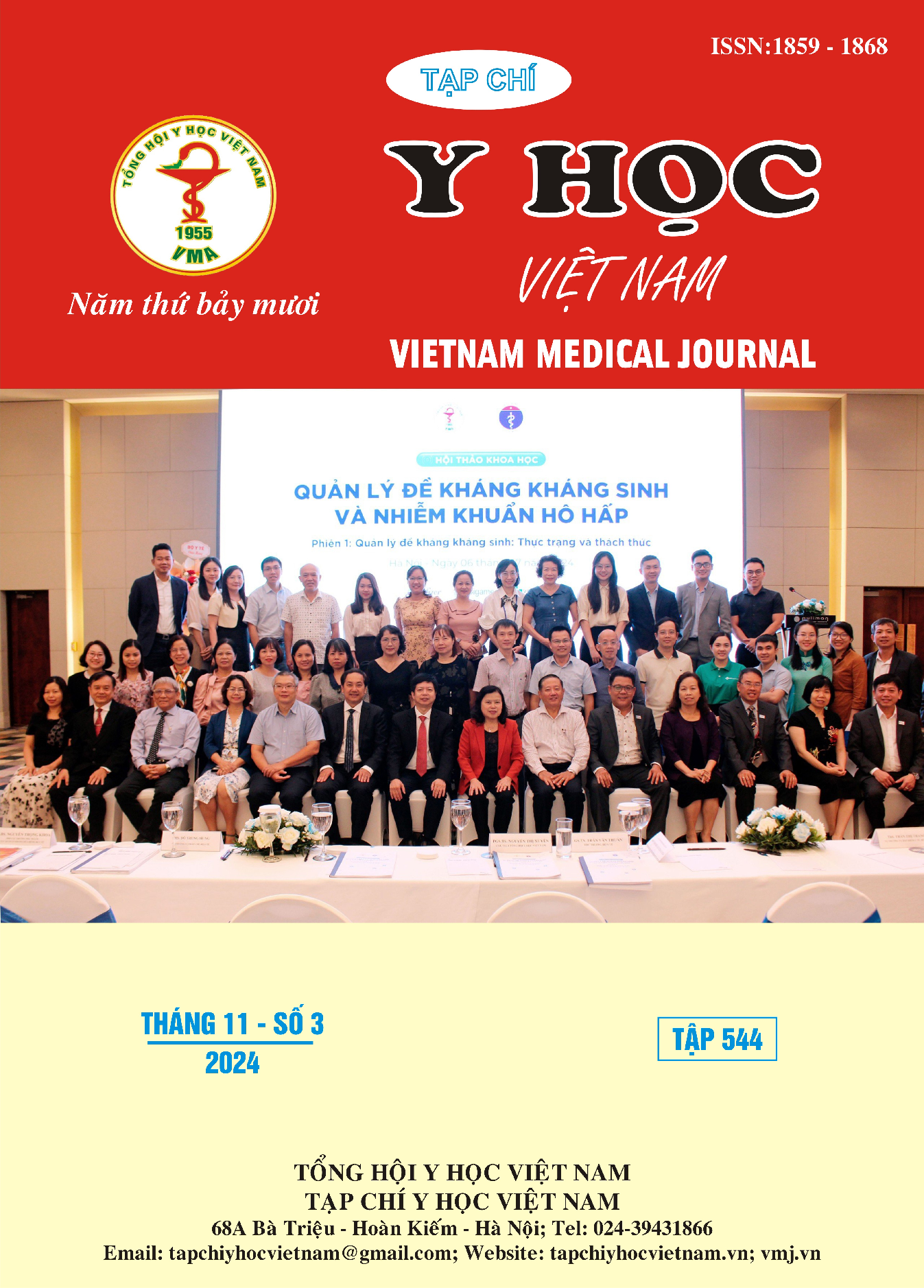EVALUATION OF THE ROLE OF DIAPHRAGM ULTRASOUND IN PREDICTING MECHANICAL VENTILATION AT THE INTENSIVE CARE UNIT OF HANOI MEDICAL UNIVERSITY HOSPITAL
Main Article Content
Abstract
The study was conducted on 40 patients on mechanical ventilation who met the criteria for weaning from mechanical ventilation, being treated at the Emergency and Intensive Care Department of Hanoi University of Medicine from July 2023 to July 2024, using a prospective cross-sectional descriptive method to evaluate the role of diaphragm ultrasound in predicting weaning outcomes in this patient group. The results of the study indicate that diaphragm ultrasound plays a role in predicting a high likelihood of weaning failure, especially when used in conjunction with clinical factors. The diaphragm excursion (DE) and diaphragm thickness fraction (DTF) ultrasound indices have sensitivities and specificities of 60%, 100% and 88.6%, 100%. When these two indices are combined with the patient's respiratory rate (RR) during the weaning process, they create two new indices: the rapid shallow breathing index combined with diaphragm excursion (DE-RSBI). The rapid shallow breathing index with diaphragm thickness fraction (DTF-RSBI) can predict weaning failure from mechanical ventilation better than the simple rapid shallow breathing index (RSBI), with areas under the curve (AUC) of 0.937, 0.92, and 0.889, respectively. Therefore, it can be concluded that diaphragm ultrasound plays an important role in predicting weaning from mechanical ventilation, and it is necessary to combine clinical assessment with diaphragm ultrasound to achieve a higher effectiveness in predicting weaning than using clinical factors alone.
Article Details
Keywords
diaphragm ultrasound, percentage of diaphragm thickness, diaphragm mobility amplitude, rapid shallow breathing index diaphragm mobility, rapid shallow breathing index percentage of diaphragm thickness, weaning from mechanical.
References
2. Wawrzeniak IC, Regina Rios Vieira S, Almeida Victorino J. Weaning from Mechanical Ventilation in ARDS: Aspects to Think about for Better Understanding, Evaluation, and Management. Biomed Res Int. 2018; 2018:5423639.3.
3. Tenza-Lozano, E., Llamas-Alvarez, A., Jaimez-Navarro, E. et al. Lung and diaphragm ultrasound as predictors of success in weaning from mechanical ventilation. Crit Ultrasound J 10, 12 (2018). https://doi.org/10.1186/s13089-018-0094-34.
4. Santana PV, Cardenas LZ, de Albuquerque AL, de Carvalho CR, Caruso P. Diaphragmatic ultrasound:A review of its methodological aspects and clinical uses. J Bras Pneumol. 2020;46: e20200064.
5. Song, J., Qian, Z., Zhang, H. et al. Diaphragmatic ultrasonography-based rapid shallow breathing index for predicting weaning outcome during a pressure support ventilation spontaneous breathing trial. BMC Pulm Med 22, 337 (2022). https://doi.org/10.1186/s12890-022-02133-5.
6. Bộ Y tế. Hướng dẫn quy trình kỹ thuật chuyên ngành Hồi sức-Cấp cứu và Chống độc, ban hành kèm quyết định số 1094/QĐ-BYT ngày 30/05/ 2014 của Bộ trưởng Bộ Y tế. 2014. 5: 136-140.
7. Ata Mahmoodpoor, Shahnaz Fouladi, Ali Ramouz, Kamran Shadvar, Zohreh Ostadi, and Hassan Soleimanpourcorresponding author. Diaphragm ultrasound to predict weaning outcome: systematic review and meta-analysis. doi: 10.5114/ait.2022.117273


